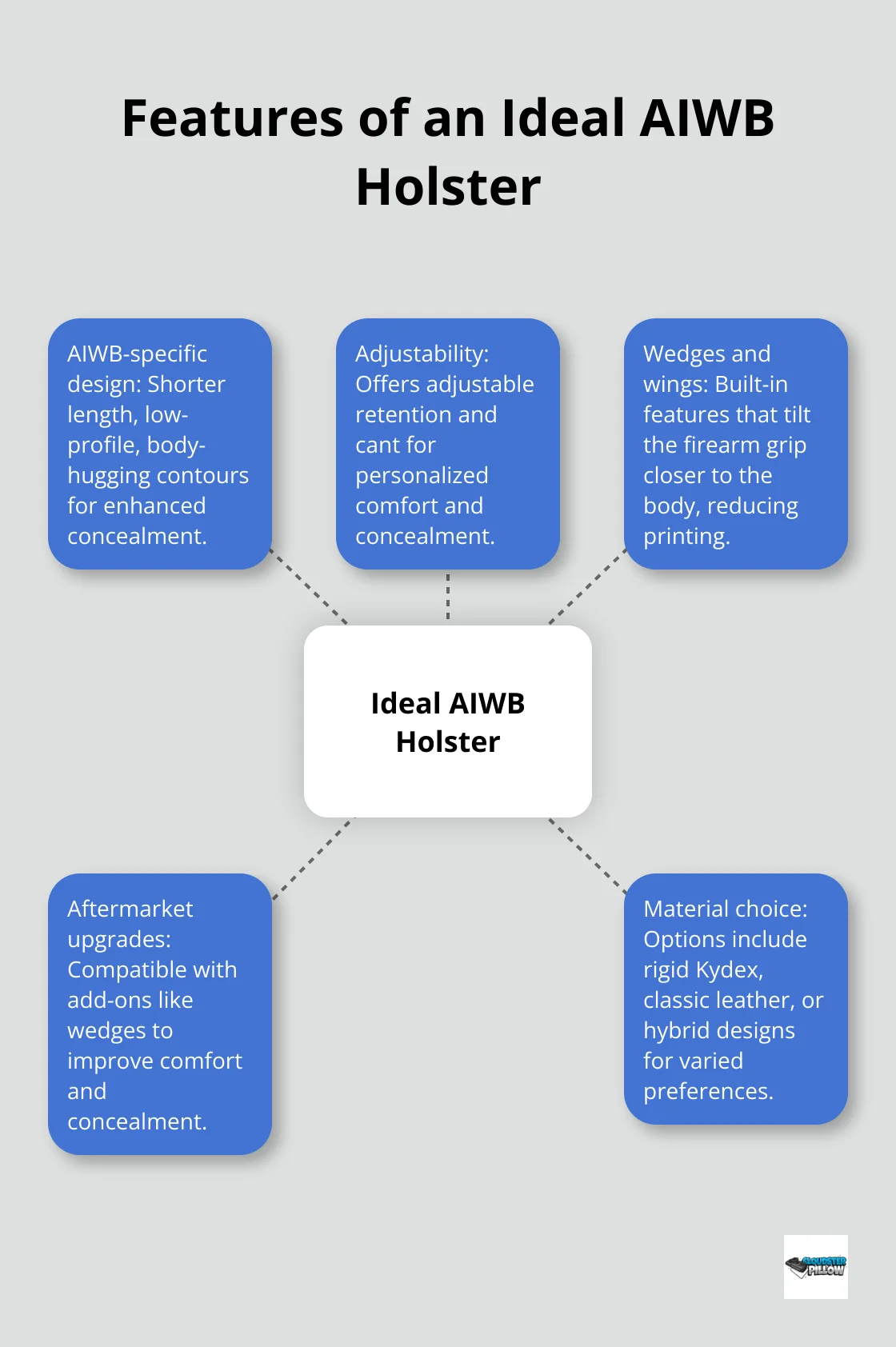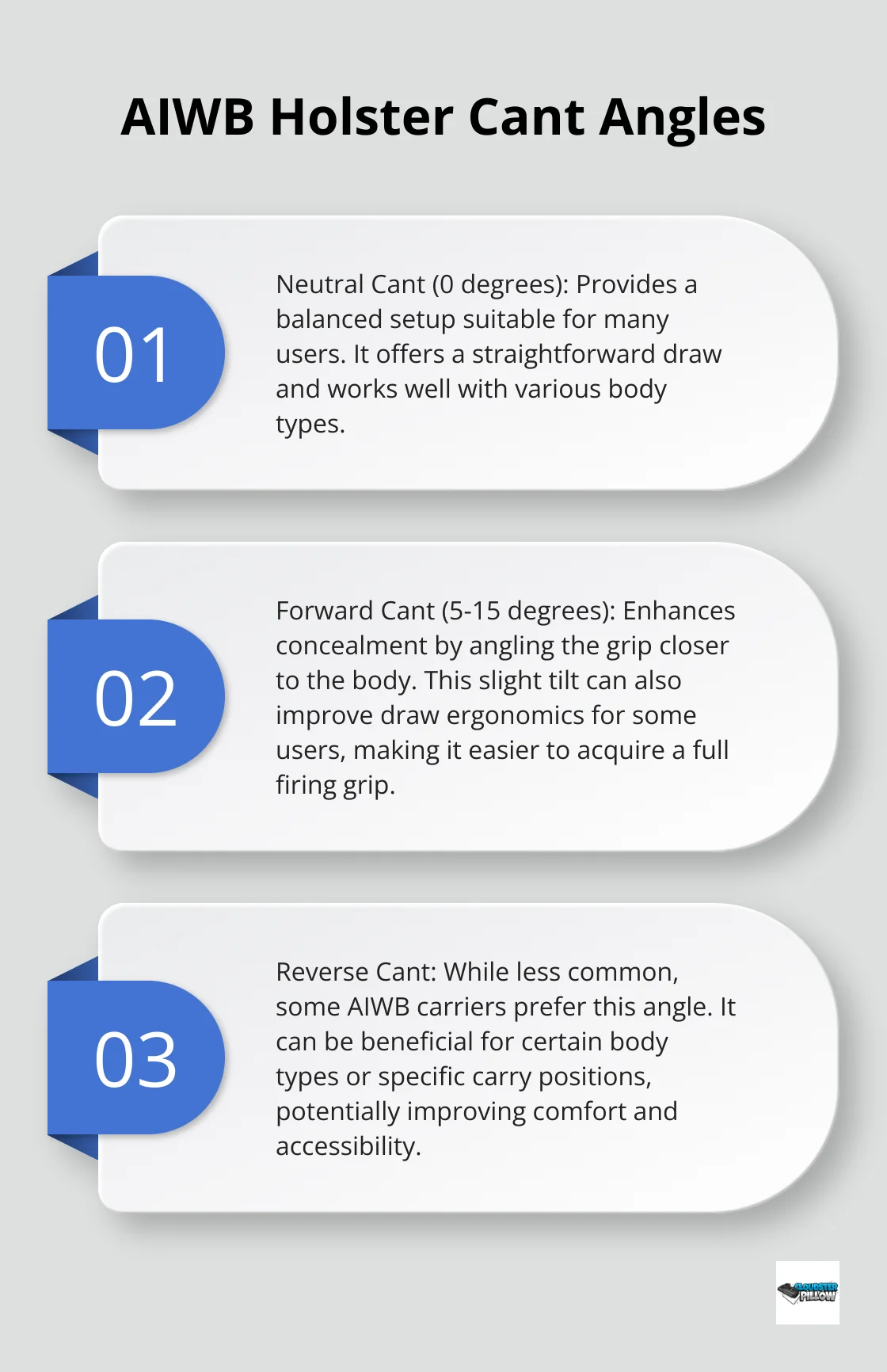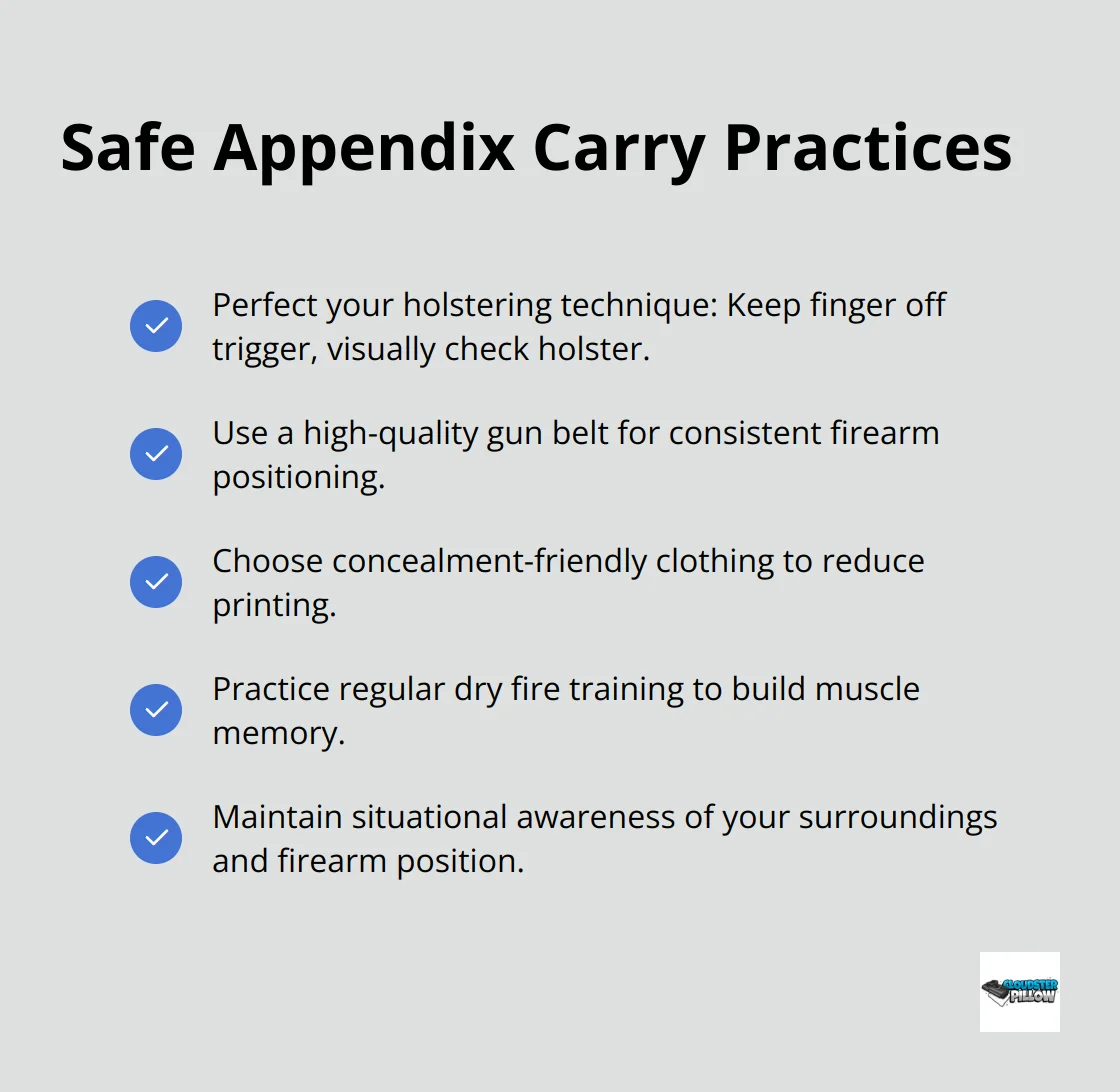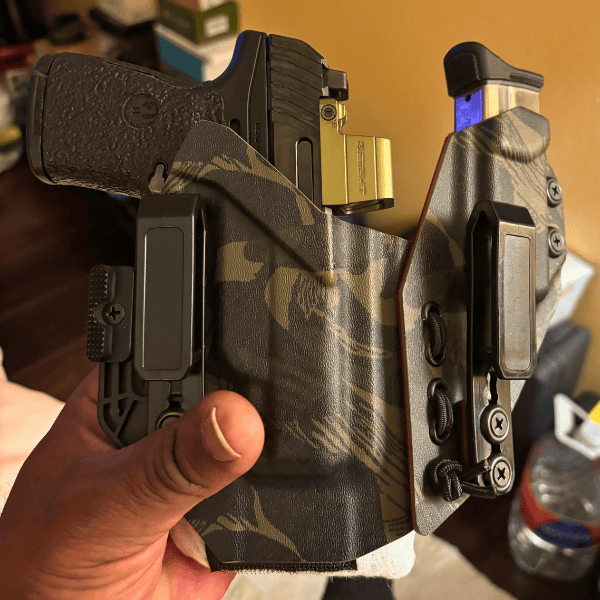Uncategorized
Appendix Carry Tips for a Safe and Comfortable Experience
At Cloudster Pillow, we understand the importance of safe and comfortable concealed carry. Appendix carry has gained popularity among CCW enthusiasts for its accessibility and ease of concealment.
However, mastering this method requires careful consideration of gear, technique, and safety practices. In this post, we’ll share essential tips to help you make the most of appendix carry while prioritizing comfort and security.
What Makes the Perfect AIWB Holster?
AIWB-Specific Design Features
Appendix carry holsters are ideal for all-day concealed carry when designed with comfort features like padded backers and adjustable cant. They often have a shorter overall length to prevent digging into your thigh when seated. Look for holsters with a low-profile design that hugs your body contours. This reduces printing and enhances concealment.
Adjustability: The Key to Comfort
No two bodies are alike, which makes adjustability in your holster important. Seek out holsters that offer adjustable retention. This allows you to play with the placement of your weapon until it disappears. Additionally, adjustable cant lets you angle the grip of your weapon for optimal draw and concealment.
The Power of Wedges and Wings
One game-changing feature in modern AIWB holsters is the inclusion of built-in wedges or wings. These seemingly small additions make a world of difference. A wedge at the bottom of the holster tilts the grip of your firearm closer to your body, significantly reducing printing. Wings (or claws) do a similar job by pushing against your belt, rotating the grip inward.
Aftermarket Upgrades
For those looking to upgrade their current holster, aftermarket options like wedges can improve comfort and concealment for any AIWB setup. These accessories work with a wide range of holsters, adding versatility to your carry system.
Material Matters
The material of your holster plays a significant role in comfort and functionality. Kydex offers rigidity and durability, while leather provides a classic feel. Some hybrid designs combine the best of both worlds. Try different materials to find what works best for your needs.

Now that we’ve covered the essentials of choosing the right AIWB holster, let’s move on to proper positioning and adjustments to maximize your comfort and concealment.
How to Position Your AIWB Holster for Optimal Comfort and Concealment
Finding Your Sweet Spot
The ideal position for your appendix carry holster lies just off-center, typically in the 1-2 o’clock position – or right in front of your hip. This location often provides the best balance of comfort and concealment for most body types. However, don’t limit yourself to this range. Some carriers achieve success by positioning their holster closer to 2 o’clock. Experiment with different placements to discover what works best for you.
Adjusting Ride Height
The ride height of your holster significantly impacts both concealment and draw speed. A lower ride height often improves concealment but may slow down your draw. On the flip side, a higher ride height can speed up your draw but might increase printing. Start with a medium ride height and adjust from there. Fine-tune this setting based on your body type, clothing choices, and personal preferences.
Mastering Cant Angle
Your holster’s cant angle affects comfort and accessibility. Many users find success with a neutral cant (0 degrees), but a slight forward cant (5-15 degrees) can enhance concealment and improve draw ergonomics. Some AIWB carriers even prefer a reverse cant for their specific body type. Try different angles to determine what feels most natural and efficient for you.

The Importance of Regular Adjustments
Your ideal setup isn’t static. It may change based on various factors such as clothing choices, activity levels, or even daily fluctuations in body shape. Make small tweaks throughout the day to maintain optimal comfort and concealment. This adaptability ensures your AIWB carry remains effective in various situations.
Leveraging Holster Features
Take advantage of the features your holster offers. Many modern AIWB holsters come with adjustable retention, modular components, and built-in wedges or wings. These elements (when properly utilized) can dramatically improve your carry experience. The concealment wing uses leverage to angle your holster inward, causing the grip to protrude less and reducing the risk of printing. Adding a holster wedge is the ideal accessory to reduce printing and add comfort to any IWB holster and appendix carry holster. Don’t hesitate to experiment with different configurations to find your perfect setup.
As you perfect your AIWB positioning, it’s essential to prioritize safety. Let’s explore critical safety considerations to ensure responsible and secure appendix carry.
How to Ensure Safe Appendix Carry
Perfect Your Holstering Technique
Appendix carry requires a strong focus on safety. The most critical moment in AIWB carry is holstering your firearm. Always keep your trigger finger straight and off the trigger during this process. Look your firearm into the holster, and ensure no clothing obstructs the holster mouth. This visual check prevents accidental discharges caused by fabric catching the trigger.
Accidental discharges can occur during re-holstering. Take your time and never rush this step. If you feel any resistance, stop immediately and reassess.
Select a High-Quality Gun Belt
A sturdy gun belt is essential for safe appendix carry. It provides the necessary support to keep your firearm and holster in a consistent position throughout the day. This stability is vital for both safety and quick access in emergency situations.
Avoid using standard dress belts or flimsy options. Instead, opt for purpose-built gun belts designed to handle the weight of your firearm without sagging or twisting. Many CCW instructors recommend reinforced nylon or leather belts with a tensile strength of at least 300 pounds.
Pick Concealment-Friendly Clothing
Your wardrobe plays a significant role in safe appendix carry. Loose-fitting shirts in darker colors or patterns help break up the outline of your firearm, reducing the risk of printing. Avoid tight or clingy fabrics that can reveal the shape of your holster.
Try clothing with strategic features like false buttons or extra fabric in the front to aid concealment. Some CCW-specific clothing brands offer shirts with slightly longer front panels to provide additional coverage for AIWB carriers.
Adjust your clothing choices based on your activities. What works for a day at the office might not suit more active pursuits. Always prioritize access to your firearm while maintaining proper concealment.
Practice Regular Dry Fire Training
Incorporate regular dry fire training into your routine to build muscle memory and improve your draw technique. This practice (with an unloaded firearm) helps you become more comfortable with your AIWB setup and enhances your overall safety.
Focus on smooth, consistent movements during your draw and re-holster. Pay special attention to keeping your finger off the trigger until you’re on target and ready to shoot.
Maintain Situational Awareness
Stay alert to your surroundings when carrying AIWB. Be mindful of your firearm’s position, especially when sitting, bending, or moving in crowded spaces. This awareness helps prevent accidental exposure and ensures you’re ready to react if necessary.

FAQs
What makes the perfect AIWB holster?
The perfect AIWB (Appendix Inside the Waistband) holster combines key design features for comfort and concealment. Look for holsters with AIWB-specific designs, such as padded backers, low-profile shapes, and adjustable retention. Wedges or wings can significantly enhance comfort by tilting the firearm’s grip inward, reducing printing. Adjustable cant and ride height are also important to ensure a smooth draw and optimal fit. Material choices like Kydex, leather, and hybrid options offer durability and comfort, depending on your needs.
How do I position my AIWB holster for optimal comfort and concealment?
The ideal AIWB holster position is typically around the 1-2 o’clock position, slightly off-center. This location balances comfort and concealment for most body types. Experiment with different placements to find what works best for you. Adjust the ride height to find the right balance between concealment and quick draw speed, and experiment with cant angles (neutral, forward, or reverse cant) to maximize comfort and draw ergonomics. Regularly adjust the holster throughout the day based on changes in body position and clothing choices.
What is the role of wedges and wings in appendix carry holsters?
Wedges and wings are crucial features in modern AIWB holsters. Wedges tilt the grip of the firearm inward, reducing printing and improving concealment. Wings (or claws) push against the belt, causing the holster to rotate the grip closer to your body. These features enhance comfort and help keep the firearm hidden beneath clothing, ensuring that your carry is both secure and discreet. Aftermarket wedge options, like the Cloudster Pillow, can further improve comfort and concealment.
How do I ensure safe appendix carry?
To ensure safe appendix carry, focus on proper holstering technique. Always keep your finger off the trigger when holstering your firearm, and visually inspect the holster to ensure no fabric is obstructing it. Use a high-quality gun belt designed to support the weight of your firearm, avoiding regular dress belts. Choose clothing that helps conceal the firearm without restricting your movement, and practice regular dry fire training to build muscle memory for a smooth, controlled draw. Situational awareness is key—stay alert to your surroundings, especially when sitting or moving in tight spaces.
What type of belt should I use for appendix carry?
For safe and comfortable appendix carry, a sturdy, purpose-built gun belt is essential. These belts are designed to support the weight of your firearm and prevent sagging or twisting. Avoid using standard dress belts, which lack the necessary support. Opt for reinforced leather or nylon belts with a tensile strength of at least 300 pounds. A good gun belt ensures that your holster stays in place throughout the day, providing consistent access to your firearm when needed.
Final Thoughts
Appendix carry mastery demands dedication, proper gear, and unwavering safety practices. You must select an AIWB-specific holster with adjustable features, find your optimal positioning, and prioritize safety in every aspect of your carry. Consistent practice builds confidence and proficiency with your appendix carry setup, so regular dry fire training and range time will refine your draw technique and improve overall readiness.
We at Cloudster Pillow understand the importance of comfort in concealed carry. Our adjustable shredded cooling gel memory foam pillow reduces pressure points and improves concealment, making it an excellent addition to your everyday carry gear. This solution enhances your appendix carry experience and complements your existing setup.
Appendix carry proves highly effective and comfortable when approached with the right mindset, equipment, and training. The tips and techniques discussed in this guide will set you on the path to a safe, comfortable, and confident appendix carry experience. Always stay vigilant, maintain situational awareness, and be willing to make adjustments as needed to ensure you’re prepared without compromising comfort or concealment.


Pingback: How to Wear an Appendix Holster: A Complete Guide - Cloudster Pillow
Pingback: What is the Most Comfortable IWB Holster? - Cloudster Pillow
Pingback: Best Holster Options for Sig Sauer P365 X Macro